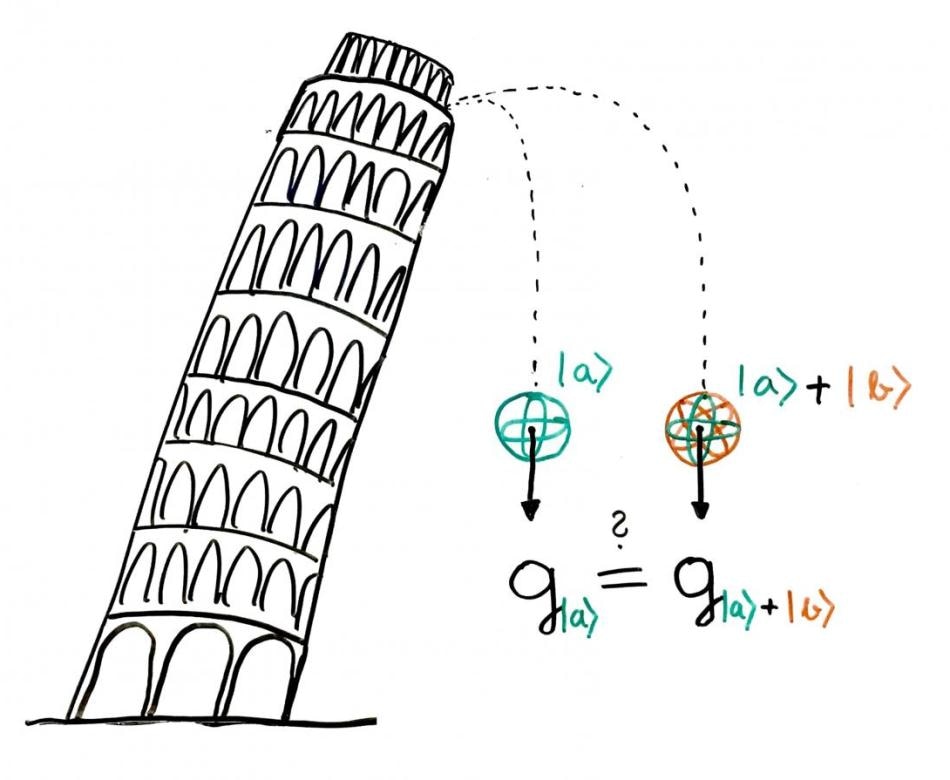Jun 5 2017
Sixteenth century scientist Galileo Galilei threw two spheres of different mass from the top of the Leaning Tower of Pisa to establish a scientific principle.
 In the new quantum test of the Einstein equivalence principle, free fall of atoms in quantum superpositions on different mass-energies, |a> and |b>, was compared to the free fall of atoms with a well-defined, classical mass-energy |a>. In all previous tests of this principle, the objects were in classical mass-energy states. (Credit: Dr Magdalena Zych)
In the new quantum test of the Einstein equivalence principle, free fall of atoms in quantum superpositions on different mass-energies, |a> and |b>, was compared to the free fall of atoms with a well-defined, classical mass-energy |a>. In all previous tests of this principle, the objects were in classical mass-energy states. (Credit: Dr Magdalena Zych)
Now nearly four centuries later, a team of Italian physicists has applied the same principle to quantum objects using a novel scientific method proposed by UQ physicist Dr Magdalena Zych, reported today in Nature Communications.
Dr Zych, from the ARC Centre of Excellence for Engineered Quantum Systems, said the work could lead to the development of new sensors with applications in the study of volcanic eruptions and earthquakes, in searching for mineral deposits, in navigation of Earth and space, and in high-precision measurements of time, frequency and acceleration.
Mathematician and physicist Albert Einstein described the principle last century and it became known as ‘Einstein’s equivalence principle’ for atoms whose mass is in a quantum superposition state.
Dr Zych said the principle played a vital role in physicists’ understanding of gravity and space-time.
“The principle contends that the total inertial and gravitational mass of any objects are equivalent, meaning all bodies fall in the same way when subject to gravity,” she said.
“Our research team conducted a quantum version of the Leaning Tower test.”
The novel approach was first proposed by Dr Zych and University of Vienna and Austrian Academy of Science researcher Professor Časlav Brukner.
“Our test relied on a unique quantum feature: superposition,” Dr Zych said.
“In relativistic physics, the total mass of a system depends on its internal energy.
“In quantum theory, a system can occupy two or more different energy states ‘at once’. This is called quantum superposition, which means a quantum system may occupy different mass-energies concurrently.”
A team led by Professor Guglielmo Tino of the University of Florence and Rome’s Istituto Nazionale di Fisica Nucleare (National Institute for Nuclear Physics) designed and realised the experiment.
“The spheres in Galileo’s Leaning Tower example were replaced by rubidium atoms,” Dr Zych said.
“The tower was replaced by a scheme developed by Professor Tino’s team that is based on Bragg atom interferometry.
“The experiment confirmed the validity of the Einstein equivalence principle for quantum superpositions with a relative precision of a few parts per billion.”
The collaboration included researchers from the University of Bologna and the European Space Agency.